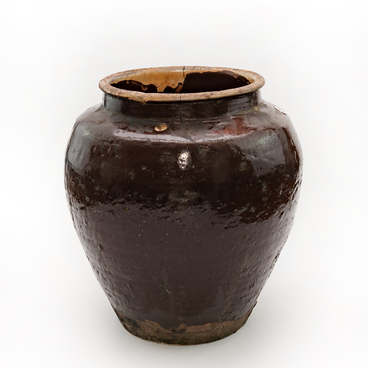A special cooper’s tool, the croze, was used to cut cask grooves, that is, narrow grooves into which the bottom of the barrel was inserted. This item consists of a croze’s toothed blade that slides along the staves from the inside; a movable bar with a rectangular bar mounted perpendicularly and with a steel cutter fixed in it is inserted into the gouged-out hole.
Such a tool in the Amur region has been simplified in manufacturing compared to similar production in the central regions of the country. It does not have two components: a guide bar, which during operation rested against the ends of the staves and slid along them, as well as a clamping wedge.
Fishing became the main economic activity of the immigrant peasants. Farming, due to local climatic conditions, did not take root on a large scale, and the main income item of a peasant who came from the central regions of Russia to the Lower Amur was the fish trade.
In connection with the development of fishing in the Lower Amur villages, cooperage production began to develop on a large scale: almost every yard had its own “cooperage” for making barrels, vats for fish and caviar. The development of cooperage can be traced by the example of the village of Zherebtsovsky. More than half of the museum’s collection of carpentry and cooperage tools, including the croze exhibit, originated from this village.
For salting and transporting chum salmon, caviar, Kaluga and sturgeon balyk fish for sale, a large number of fish barrels with a volume of 250–300 liters, as well as caviar barrels with a volume of 15–20 liters were required. People usually had time for cooperage in late autumn, winter and early spring.
Men went into the forest for several months to harvest firewood for steamships, staves for barrels. The craftsmen noticed that any wood split much better in its raw form, that is, immediately after the tree was felled. Therefore, staves were made directly in the forest. Cedar, linden, spruce, aspen were used.
The wood had to be
straight-layered, and the master had to be able to split the deck so that the
staves were smooth and clean, and less wood chips were wasted. After the staves
were prepared, they were left to dry, which took about three months. In the
spring, the staves were brought home to the village, and people began to make
barrels.




